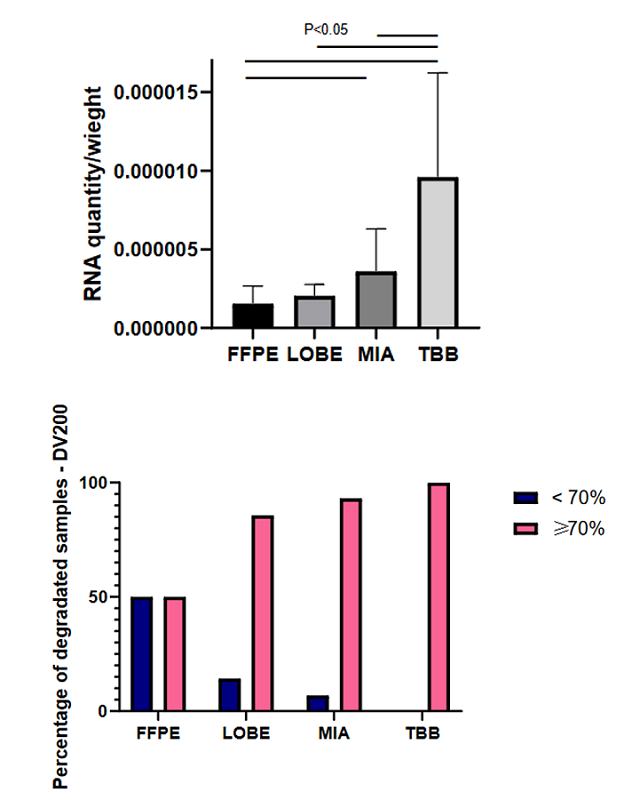Abstract
INTRODUCTION: Minimally invasive autopsy(MIA) is a medical procedure based on imaging diagnosis and percutaneous intervention, performed to define the cause of death. Additionally, molecular research is useful to define different pathologies. Therefore, MIA combined with molecular studies could be a robust tool for scientific research.
AIMS AND OBJECTIVES: To determine the viability of lung samples from MIA in terms of molecular quantity/quality for genetic studies.
METHODS: RNA extraction with quantity (Qubit) and quality (Bioanalyzer-DV200) analyzes from fixed formalin paraffin embebed (FFPE) samples from surgical lung biopsy and frozen lung samples from MIA, non-neoplastic areas of lobectomy (LOBE) and transbronchial biopsy (TBB) was performed.
RESULTS: RNA quantity from MIA was higher than FFPE and lobectomy, yet not in frozen biopsy (TBB) (P<0.05). The order of medical procedure was similar between RNA quantity and quality. However, 50% of FFPE cases had degraded samples in FFPE; while in lobectomy, MIA and TBB the amount of non-degraded samples was greater than 86%.
CONCLUSIONS: Although the TBB frozen samples are the ideal to molecular approaches, surprisingly MIA reveals RNA quantity and quality greater than other medical procedures. Therefore, our study indicates MIA as novel and useful tool for molecular pulmonary pathology in diagnostic and/or research manner. (FAPESP: 21/09024-6, 19/01517-3, 20/13370-4; FAEPA: 1988/2019)
